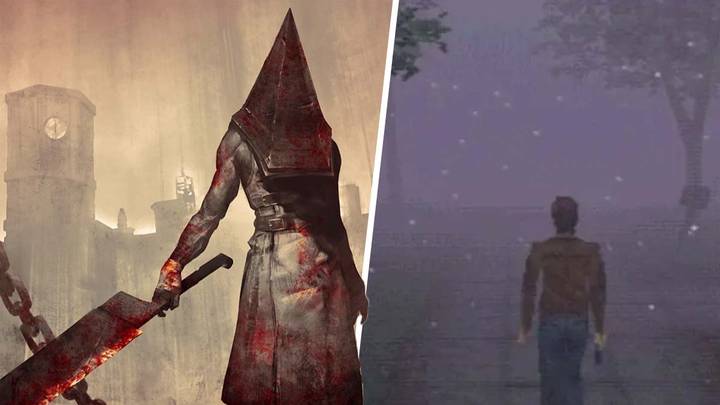Part 1: A Mysterious Mansion and a Deadly Outbreak
Resident Evil, the game that introduced the world to the survival horror genre, takes players on a terrifying journey into the heart of a sinister conspiracy and a deadly viral outbreak. Set in the fictional Raccoon City, the game follows members of the elite police task force, S.T.A.R.S. (Special Tactics and Rescue Service), as they investigate a series of grisly murders on the outskirts of the city. Their search leads them to the mysterious Spencer Mansion, a sprawling estate that hides a dark secret and a horrifying truth about the sinister Umbrella Corporation.
Players can choose to control either Chris Redfield or Jill Valentine, two S.T.A.R.S. members with unique abilities and storylines, as they navigate the treacherous halls of the Spencer Mansion and uncover the truth behind the outbreak. Along the way, they encounter a variety of bizarre and deadly creatures, from the iconic shambling zombies to the grotesque and powerful Tyrant. The game’s innovative gameplay mechanics, such as limited ammunition, inventory management, and the use of ink ribbons to save progress, create a palpable sense of tension and vulnerability that has become a hallmark of the survival horror genre.
As Chris and Jill delve deeper into the mansion, they begin to unravel the chilling story behind the T-Virus, a genetically-engineered bioweapon developed by the Umbrella Corporation. They discover that the virus has been unleashed upon the mansion and its inhabitants, transforming them into monstrous creatures and setting the stage for a desperate fight for survival. Along the way, they encounter fellow S.T.A.R.S. members, such as the enigmatic Albert Wesker, who harbors his own hidden agenda and the resourceful Rebecca Chambers, who aids them in their quest for the truth.
The game’s narrative is filled with twists and turns, as players must piece together the story of the T-Virus, the Umbrella Corporation, and the true nature of the experiments being conducted within the Spencer Mansion. As they confront the darkness and the terrible truth about their own comrades, Chris and Jill must make a choice: to risk everything in the fight for justice, or to succumb to the horrors that lurk within the mansion’s walls.
Part 2: A Desperate Fight for Survival
Resident Evil’s groundbreaking gameplay mechanics and atmospheric environments have earned it a place as a classic in the survival horror genre. The game’s environments, from the eerie and claustrophobic halls of the Spencer Mansion to the labyrinthine underground laboratories, serve as a backdrop for the characters’ struggle against the darkness and the horrors that it has unleashed.
Throughout their journey, Chris and Jill must face a variety of grotesque and horrifying creatures, each a result of the T-Virus and its devastating effects on the human body. The game’s iconic monster designs, such as the fearsome Hunters and the deadly Chimera, serve to enhance the atmosphere of dread and unease that pervades the world of Resident Evil.
As they navigate the treacherous mansion and uncover its dark secrets, players must rely on their wits, resourcefulness, and courage to survive the horrors that await them. The game’s innovative mechanics, such as the use of defensive items like daggers and stun guns to fend off attacks, and the need to manage limited inventory space, create a sense of urgency and tension that keeps players on the edge of their seats.
In the end, the story of Chris Redfield and Jill Valentine is one of survival, determination, and the fight against the darkness that threatens to consume the world. As they confront the terrible truth about the T-Virus and the Umbrella Corporation, they emerge as powerful symbols of hope and resilience, a testament to the strength of the human spirit in the face of overwhelming odds and unspeakable horrors.
The lasting impact of Resident Evil can be seen in its influence on subsequent games in the series and the wider survival horror genre. Its innovative gameplay mechanics, atmospheric environments, and deeply human themes continue to resonate with players and inspire new generations of game developers to push the boundaries of immersive storytelling and explore the darkest corners of the human psyche.
Resident Evil’s legacy is not only found in its engaging narrative and memorable characters but also in its impact on the survival horror genre as a whole. The game set the stage for a new era of horror gaming, with its unique blend of exploration, puzzle-solving, and combat that would become a defining characteristic of the series and a benchmark for the genre.
In the end, the story of Chris Redfield, Jill Valentine, and their struggle to survive the nightmare of the Spencer Mansion remains a powerful reminder of the potential for redemption, self-discovery, and the triumph of light over darkness in even the most terrifying of places. As the shadows recede and the haunting echoes of Resident Evil fade away, the legacy of the game endures as a testament to the enduring power of storytelling in video games and the capacity for art to challenge, inspire, and move us in profound and lasting ways.
The series would go on to spawn numerous sequels, prequels, and spin-offs, each exploring new facets of the Resident Evil universe and its characters, and solidifying its reputation as one of the most iconic and influential franchises in the gaming world. From the heart-pounding action of Resident Evil 4 to the terrifying isolation of Resident Evil 7, the series continues to evolve and push the boundaries of survival horror, keeping players enthralled and engaged with its blend of atmospheric storytelling and pulse-pounding gameplay.
In the end, the legacy of the first Resident Evil game is a testament to the power of imagination, creativity, and the human spirit. As the series continues to grow and evolve, its roots in the eerie halls of the Spencer Mansion and the desperate fight for survival waged by Chris Redfield and Jill Valentine remain a powerful reminder of the potential for courage, hope, and resilience in the face of unimaginable horror.










